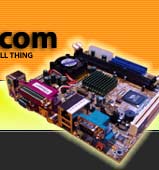|  | September 05, 2017
Choosing the right DC-DC PSU August 27, 2015
AMD's Project Quantum August 13, 2015
The Redstone PC is the ultimate Mini-ITX Minecraft Machine October 09, 2014
The "Restomod TV" April 09, 2013
Installing NAS4Free February 28, 2013
Building an XBMC 12 Home Theatre PC January 25, 2011
XBMC Guide updated to version 10.0 August 06, 2010
Building a Green PC February 15, 2010
Building an ION powered HTPC with XBMC October 10, 2008
The "Cambridge Autonomous Underwater Vehicle 2008" |
|  | | | September 12, 2008
"Florian", the DVD burning robot September 05, 2008
The "i-EPIA" May 22, 2008
The "GTA-PC" April 14, 2007
The "Digg" Case January 19, 2007
The "ITX-Laptop" December 07, 2006
The "Tortoise Beetle" October 02, 2006
The "DOS Head Unit" August 31, 2006
The "Janus Project" August 05, 2006
The "Leela PC" June 26, 2006
Nano-ITX in a Football May 17, 2006
The "EPIA Alloy Mod" April 11, 2006
Neatorama's Collection of Case Mods February 18, 2006
The "Rundfunker" October 24, 2005
The "ITX TV" October 06, 2005
The K'nex-ITX August 05, 2005
The "Waffle Iron PC" July 21, 2005
The "Supra-Server" July 18, 2005
The "Mega-ITX" July 07, 2005
The "Encyclomedia" May 25, 2005
The "Accordion ITX" |
|  | | | May 16, 2005
The "FileServerRouterSwitch" May 15, 2005
The "Mini Falcon" May 13, 2005
The "Bender PC" May 11, 2005
The "BBC ITX B" May 10, 2005
The "Frame" April 20, 2005
The "Jeannie" March 09, 2005
The "Cool Cube" January 30, 2005
First Nano-ITX Project? January 17, 2005
The "iGrill" January 15, 2005
The "Gumball PC" December 15, 2004
The "Deco Box" December 03, 2004
The "TERA-ITX" October 06, 2004
The "Coealacanth-PC" September 17, 2004
The "Gramaphone-ITX-HD" August 26, 2004
The "C1541 Disk Drive ITX" August 25, 2004
The "SEGA-ITX" August 13, 2004
The "Quiet Cubid" August 06, 2004
The "BMWPC" July 14, 2004
The "Moo Cow Moo" July 02, 2004
The "Mini Mesh Box" Full alphabetical archive on right hand side of page... |
|
|
EPIA MII 12000 Review
PCMark 2002
Futuremark's PCMark
2002 is a multipurpose benchmarking tool, suited for benchmarking
all kinds of PCs, from laptops to workstations. PCMark 2002
performs tasks such as image compression, text searching and
audio conversion.
PCMark detected the faster CPU of the MII 12000, and scored it top in its memory test, though with slightly different results to Sandra for the other boards - but it did spot the very slightly slower EPIA TC memory (or memory architecture). This was confirmed with the HDD scores - the EPIA TC wasn't quite as efficient as the other boards in this area.
3D Mark 2000
Futuremark's 3DMark 2000 measures DirectX 7 performance with several 3D game demos and tests. The test is getting rather long in the tooth now, but we have previously tested using this benchmark so kept it in for old times sake. We measured using the standard 1024 x 768 default settings.
The EPIA
M 10000 performed best here, followed by the EPIA CL, with the EPIA TC bringing up the rear. This surprised us a little, but it's only a benchmark - and DirectX 7 games are getting increasingly rare.
3D Mark 2001 SE
Futuremark's 3DMark 2001
SE measures DirectX 8 performance with several 3D game demos
and tests. The boards all buzzed along at double figure framerates, giving a smooth
but still jerky picture - with the EPIA CL favouring this particular benchmark. However these results will disappoint games players.
Hopefully the 3D graphics ability of the next generation CN400 chipset
will be an improvement on the CLE266 VIA have used in this generation of boards.
Rip
WAV to MP3
In another real world test, we used dBpower
AMP Music Converter to convert a 70MB WAV file to an MP3,
using the default settings. By ripping from the hard disc
and not a CD, we removed the CD from the test and concentrated
more on the raw power of the CPU. A similar task would be
compiling a Linux kernel. The MII was 20% faster than the other boards at 148 seconds. A modern Pentium or Athlon CPU will do the same test in under a minute, but this is certainly a step
in the right direction.
Quake 3 Arena
The CLE 266 based EPIAs are not 3D games machines, but
if stuck on a desert island with one for company, we might
want to load up a copy of Tribes with all the settings turned
down for a slice of retro disc-mining. We dug out
Quake 3 Arena and installed the 1.32 point release to perform
some industry standard 3D benchmarks. We also tested with
an optimised frame rate configuration.
To run this demo at home, load Quake, find
out what a tilde is, then press it. Type "timedemo 1",
then "demo four", rinse and repeat. Modern rocket-powered
graphics cards can manage 10 times these scores - the EPIAs make do with their own on-board graphics.
These are the results with the optimised frame
rate configuration. A little better and certainly playable,
but not beautiful. Modern games suck the lifeforce from any
graphics card not up to scratch, and EPIA integrated graphics
fall into this category. If you really intend to play games
on your EPIA, we would suggest investing in a decent PCI graphics
card (NVidia based cards are much more stable on the EPIAs in our experience).
Benchmarks - AES Encryption Benchmarking -->
|
|







